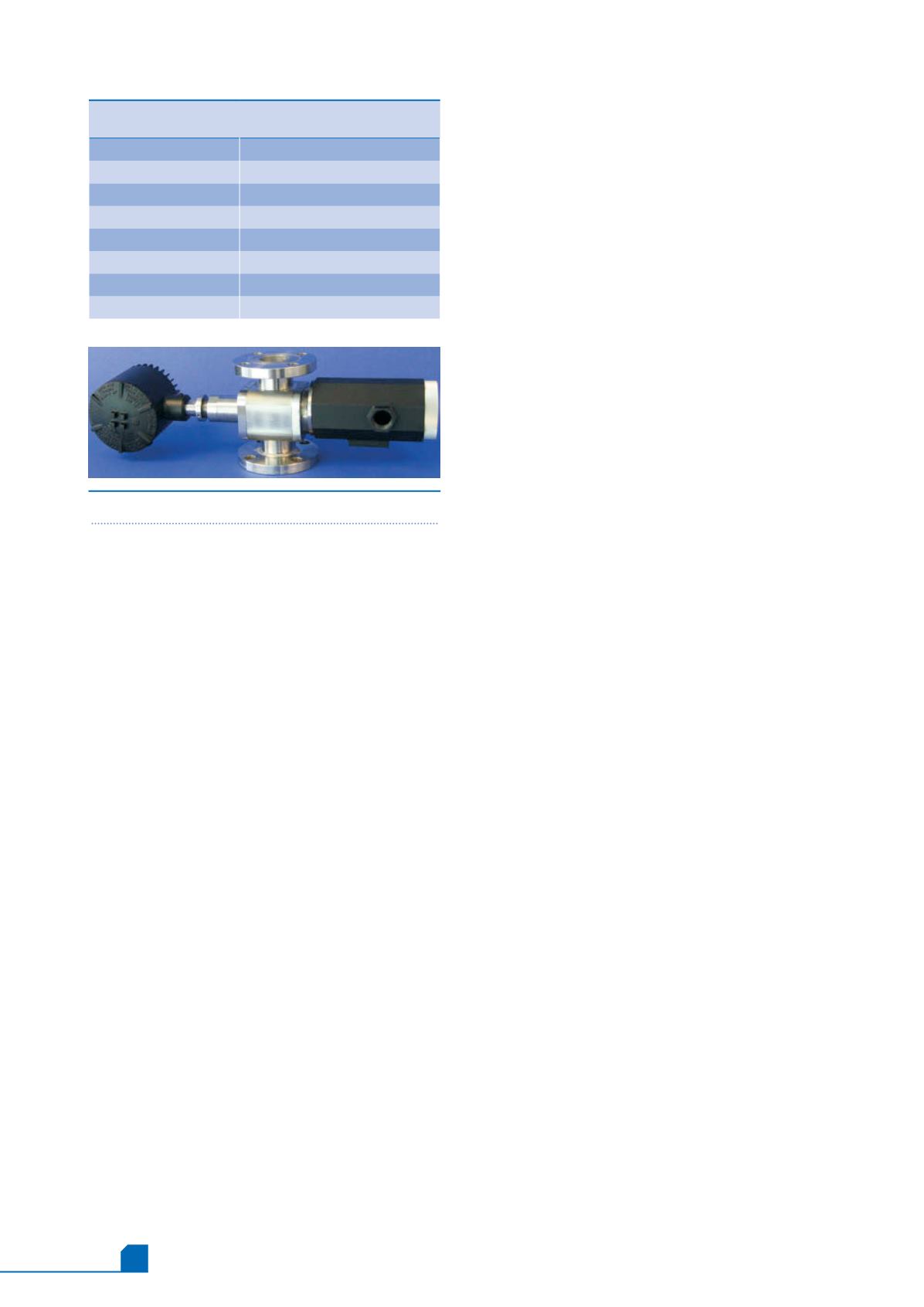
June
2016
HYDROCARBON
ENGINEERING
70
or feedstock, and immediately see changes in the process
stream without using sampling or lab analysis. The result is
the ability to create higher value process streams to meet
various market needs and increase revenue potential from
the main column bottom (MCB).
Clarified slurry oil applications and
markets
Worldwide, FCC slurry oil production is estimated to be
about 750 000 bpd. North America represents
approximately 45% of total production, with 42%
estimated for Europe and Asia Pacific. Potential end use
applications for slurry oil include: recycling it to
extinction in the FCC; charging it to a coker; using it as
fuel in the refinery; marketing it as fuel oil blending stock;
marketing it as carbon black feedstock, or as a
component of anode grade or needle coke feedstock
manufacture; or further refining it to higher value fuel
products in hydroprocessing. Each end use application
places a different set of specifications on the slurry oil
(Table 1).
Fuel oil blending accounts for approximately 80% of
production, while carbon black and needle coke consume
about 150 000 bpd. Typically, the market value of slurry oil
is highest for needle coke applications. However, the
market for needle coke is very limited when compared to
the market value for carbon black, fuel coke, residual fuel
oil, or use as refinery fuel.
Using unclarified slurry oil as cutter stock for heavy fuel
oil blending is a major outlet. Trace metals deposited on
FCC catalysts, such as nickel, vanadium, sodium, or
adhering to catalyst particles and FCC catalysts that
contain aluminum and silicon as major components, can
combine with other elements to form high melting point
compounds. These compounds are corrosive to valve seats
and exhaust valves in diesel engines. Solids content in the
range of 50 - 150 ppmw are generally permissible for marine
and refinery use.
Clarified slurry oil is also sold to make carbon black,
which is used in products such as automobile tyres, belts,
hoses and pigments. Worldwide consumption of carbon
black feedstock is about 130 000 bpd. The required density
for carbon black feedstock is high, and specificationial
attention must be given to operating the FCC fractionator
at a high enough temperature to obtain the desired
density. Not all refineries have the ability to get the
required slurry oil density for carbon black applications.
Slurry oil particulate removal
technologies
Historically, holding tanks have been used to allow solids
to settle slurry oil. Decant oil solids content is a function
of the sedimentation tank design, the physical
characteristics of the slurry, the temperature of the storage
tank, and whether settling aids are used. To reach the
levels of clarification required to create higher value end
use products, such as marine fuel, refineries need to wait
for settling to occur. Once the slurry oil has settled,
multiple lab tests must be performed to ensure that
product quality meets market specification requirements.
The settling and testing processes consume valuable time
and resources before any sales and resulting revenue can be
realised.
Sludge from holding tanks is also generated with
clarified slurry oil. Sludge is classified as hazardous waste,
requiring special treatment and added expense for
disposal. Depending on the tank size and rate of slurry oil
production, holding tank cleaning cost estimates range
from US$1 - 4 million. In the absence of countermeasures,
increasing residual feed to the FCC unit tends to increase
the rate of slurry oil production and resulting sludge
formation. This can also increase the need to clean tanks
on a more frequent basis.
Membrane filters were first put into slurry oil service
around 1990. Mechanical filtration operates at
temperatures up to 600˚F and employs tubular porous
metal elements. Solids collect on the inside of the
elements, while the filtrate passes through to the outside.
Some filters use porous sintered woven wire mesh metal
filters and operate at 400 - 650˚F. Other filters employ a
2 - 5 micron woven wire filter element, using light cycle oil
(LCO) as a backwash at 350˚F, and claim only an 85 - 95%
solids removal from feed slurry.
Electrostatic precipitators are routinely used to
remove catalyst fines from the FCC unit stack. In an
electrostatic separator, a similar principle is used for the
removal of solids from liquids. Electrostatic separation is
a robust, automatic process that has been in use
commercially for over 30 years to remove FCC catalyst
fines from slurry oil, or other hydrocarbon streams. The
technology is not affected by the presence of
asphaltenes, making it an excellent choice for removing
solids not only from residual FCC derived slurry oil, but
from gas oil crackers as well.
Adding online optical particle sensors and smart
analysis software to an electrostatic separator increases
Table 1.
On specification clarification standards
for CSO
CSO market application Clarity specification (CSO) (ppm)
Carbon black feedstock 100 - 500
Refinery fuel
50 - 150
Marine fuel
50 - 100
Pitch feedstock
25 - 100
Needle coke feedstock 25 - 100
Hydrotreater feedstock 10 - 50
Carbon fibre feedstock 5 - 10
Figure 1.
Online optical particle sensor.


